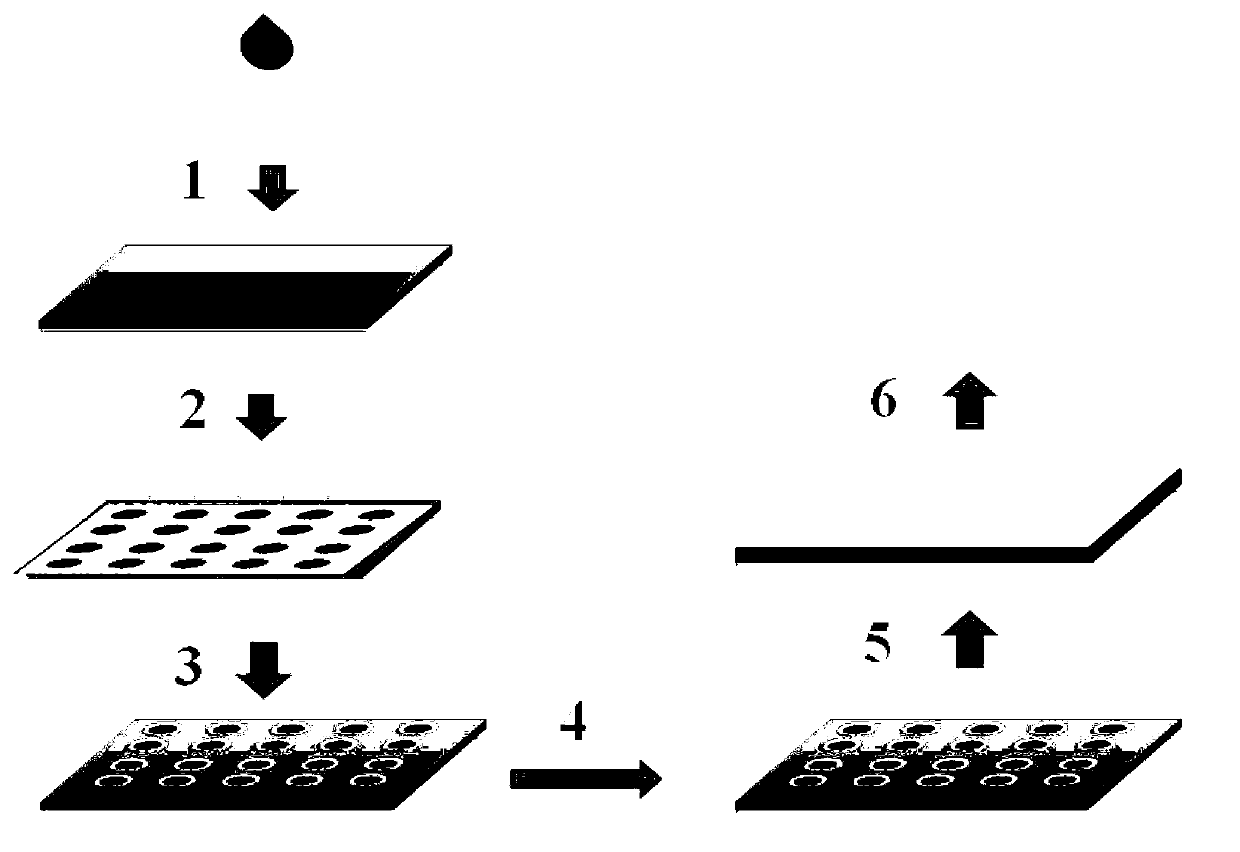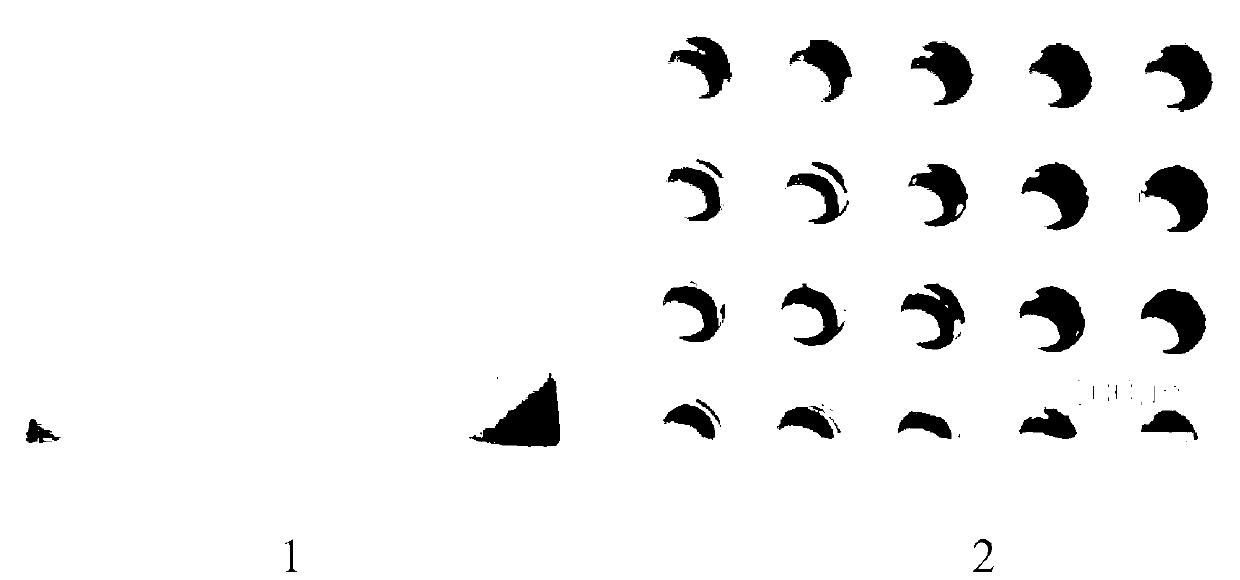Simple preparation method and application of polydimethylsiloxane (PDMS) polymer microlens array
A micro-lens array and polymer technology, which is applied to lenses, micro-lithography exposure equipment, and photo-engraving processes of patterned surfaces, can solve the problems of high price and complicated operation, and achieve the effect of simple operation and low experimental cost.
- Summary
- Abstract
- Description
- Claims
- Application Information
AI Technical Summary
Problems solved by technology
Method used
Image
Examples
Embodiment 1
[0036] The preparation of embodiment 1PDMS polymer lens array
[0037] The SU-8 polymer template was fabricated by photolithography technology, and the template contained a circular hole with a diameter of 50 microns. The whole PDMS polymer lens array preparation process is as follows: figure 1 As shown, apply SU-8 photoresist on a clean glass sheet, adjust the thickness of the glue (100 microns to 1 mm) according to needs, heat at 95 degrees Celsius for 1 hour to evaporate the solvent in the photoresist; put the designed mask The film was exposed to ultraviolet light for 60 seconds; placed in the developer solution ethyl lactate for development, the development time was adjusted according to needs (1~15 minutes), and then heated at 80°C for 5 minutes to make the remaining unexposed SU8 photoresist Thermal fusion occurs, and the schematic diagram before and after thermal fusion is as follows figure 2 Shown; finally exposed under the UV lithography machine for 120 seconds to...
Embodiment 2
[0038] Embodiment 2 Preparation of different height PDMS polymer lens arrays
[0039] By controlling the development time to 1 minute, 2 minutes, 3 minutes, 4 minutes, 5 minutes, and 10 minutes, gradually increase the amount of unexposed SU8 photoresist removed to realize the control of the microwell depth in the SU8 template. PDMS polymer lens arrays prepared using templates with different conditions such as Figure 5-10 shown.
Embodiment 3
[0040] Embodiment 3 Imaging Research of PDMS Polymer Lens Array
[0041] This process is realized by an optical microscope. An object image is placed under the prepared PDMS polymer microlens array. By adjusting the height of the lens and the object image to find a suitable focal length, each lens on the microlens array can be observed in a certain area. All can display the image of the object, and the object image of this experiment adopts the printed letter A. At the same time, lenses of different sizes are used to achieve imaging of different sizes (imaging effects such as Figure 11-14 shown).
PUM
 Login to View More
Login to View More Abstract
Description
Claims
Application Information
 Login to View More
Login to View More - R&D
- Intellectual Property
- Life Sciences
- Materials
- Tech Scout
- Unparalleled Data Quality
- Higher Quality Content
- 60% Fewer Hallucinations
Browse by: Latest US Patents, China's latest patents, Technical Efficacy Thesaurus, Application Domain, Technology Topic, Popular Technical Reports.
© 2025 PatSnap. All rights reserved.Legal|Privacy policy|Modern Slavery Act Transparency Statement|Sitemap|About US| Contact US: help@patsnap.com



